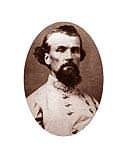One would hope so, but not too hard of course.
Whenever I go over that collection ~ and this is just part of a far larger collection accessible on the net, I look for family faces and always find a new one.
Now not all those faces are family ~
Worth nothing ~ there may be as many as 105,000 Sa'ami in the Fenno-Scandinavian peninsula but there are at least 9,000,000 Sa'ami descendants in the United States.
One aspect of Sa'ami life not covered in those pictures was the forced relocation of most of the population to America in the mid 1600s through the early 1700s.
Muawiyah wrote: "One aspect of Sa'ami life not covered in those pictures was the forced relocation of most of the population to America in the mid 1600s through the early 1700s."
They were
forest finns, not
the sami.
There are today at least 25 million descendants of the Swedes and Finns of the Delaware. At least
half of these, perhaps more, have one or more Delaware Finns in their family tree.
Source
The following Colonial American surnames are known to derive
exclusively from the New Sweden Colony (original froms are in
parentheses): Bartleson/Partleson (Bertilsson);Clemson
(Clementsson/Clemmenson); Dalbo/Dalbow (Dahlbo); Derrickson (Didricsson);
Holston/Hosten (Holstein); Longacre (Langaker); Lykins/Likens/Laican
(Laikkonen/Laukkainen); Mecum/Meekim (Mekonen/Mankinen); Mink
(Minkinnen/Mankinen); Mullica (Mullikka); Olson/Oldson (Olsson);
Rambo/Rambow (Rimbo/Rombo/Romppainen); Seneker/Senecca (Sinikka);
Stallcup/Stalcop (Stalkop); Steelman/ Stilman (Stille); Swanson
(Swensson); Tussey/Toss (Tossavainen/Thoresson); Vanneman/Veinom/Veinon
(Veinom/Viainen/Van Neman/Vainoimen); and Walraven (Wallrafen/Wallraven).
Source
Diamond notching—formed when the bottom ends of v-notched logs were trimmed to create a diamond shape—is found most frequently in west central North Carolina, but has also been found in western Pennsylvania and the Virginia Piedmont. This distinctively Scandinavian technique migrated south with Finns and Swedes and those who were influenced by them.
Source

Born in Ridley, Pennsylvania, in 1725 to descendents of original Finnish immigrants to the Delaware Valley, John Morton led a life dedicated to public service and was among the most respected statesmen in Colonial America.
John Morton, a hero of American independence, was the descendent of Finnish immigrants. The John Morton Project, begun by former U.S. Ambassador to Finland Marilyn Ware, is a collaborative effort to revive the history of John Morton who cast the tie-breaking vote for independence as a member of the Pennsylvania delegation to the Continental Congress in 1776. John Morton then signed the Declaration of Independence at great personal risk.
The John Morton Project
The Finnish Language on the Delaware
Site of first Finnish settlement in America.
Annals of Pennsylvania, from the discovery of the Delaware, 1609-1682
1.2.

